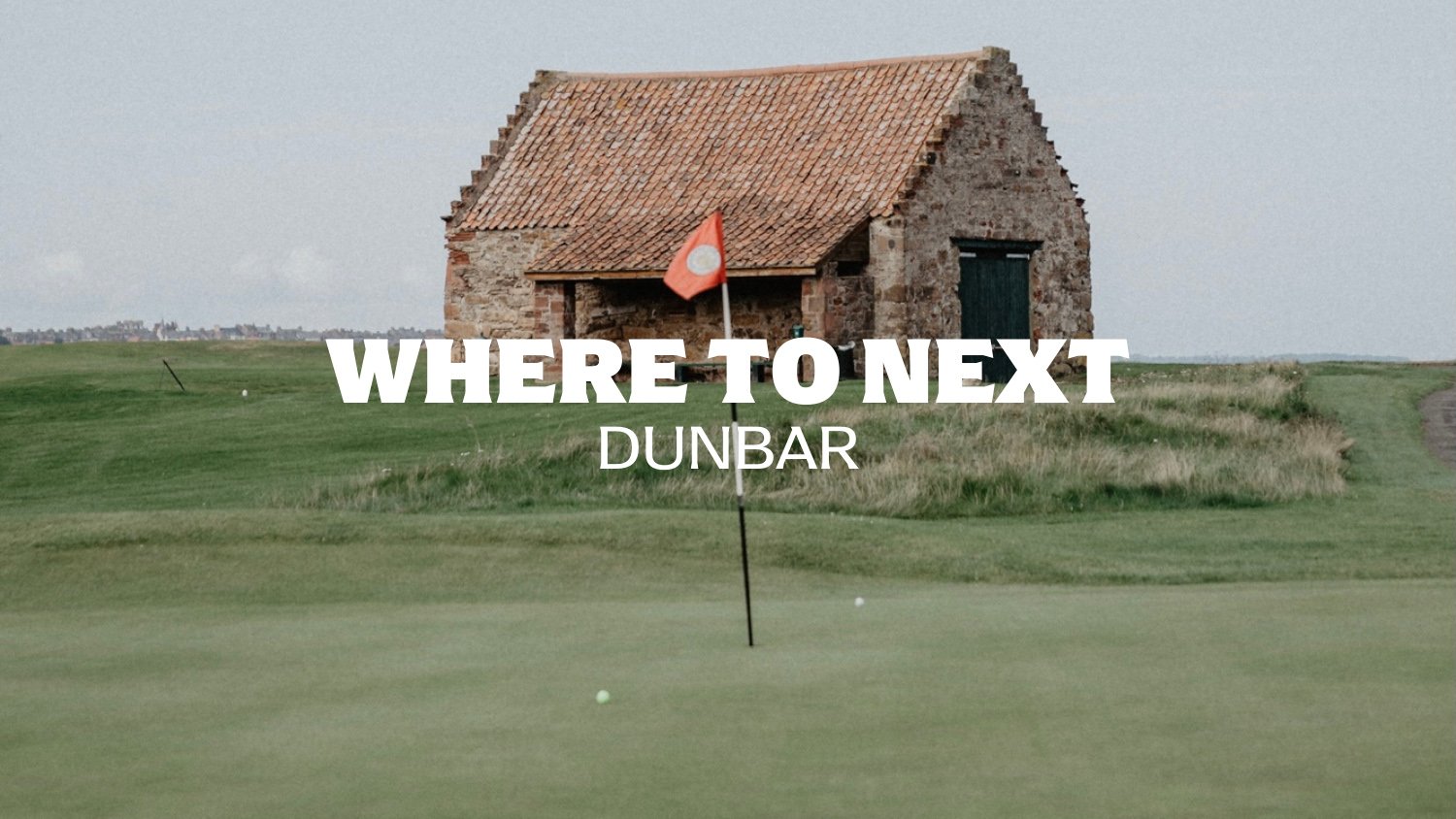Where To Next - Dunbar
BY MURRAY BOTHWELL
5 MIN READ
Tucked between the speed cameras on the A1 and the rugged red cliffs that climb out of the North Sea lies the serenely historic castle town of Dunbar. A mere thirty minutes from the border into England, and 30 miles east of Edinburgh, it is renowned for plentiful sunny days, golden beaches and rocky coastlines. Dunbar is home to the spectacular John Muir Country Park, a nature reserve for both outdoor family fun and the natural history enthusiast. An explorer, naturalist and conservationist, John was born in Dunbar and went on to contribute significantly to preserving areas of the North American wilderness.
Dunbar’s two golf courses are a perfect pair: Winterfield Golf Club, to the west, lies on a mix of parkland and links above the numerous rockpools, named after the lands connected to the old Winterfield House estate, now Belhaven Hill School. The Belhaven Brewery, famous for its ales, sits just behind the school. Before the course opened in 1935 the land was originally earmarked for villas but only one, St Margaret’s, was built. It was leased to the Club in 1977 making this huge mansion one of the most impressive, and imposing, clubhouses you may ever see.
Don’t let the eight par-3s on the score card give you the impression that you’ll be dropping birdie after birdie at every hole: aside from being constantly distracted by the views out over the beaches and the Bass Rock, your introduction to the par-3s begins at the first tee. It’s a mere 228 yards from here to a narrow shoreline fairway with a right-hand steep, rough-covered slope and then climbing back up to a defended plateau green. Off the yellows, for a bit of breathing space, saves you a whole four yards.
With a mixture of par-3s, par-4s and one par-5 on the higher level of the course which constantly switch direction, its relatively few bunkers are not your challenge: the wind, the weather and, in common with many of the East Lothian courses, the fields of billowing grasses which define the fairways so well will add to your score. Holes 2 and 3 feature the backdrop of a beautifully-built old red sandstone boundary wall which runs from near the 1st green all the way to Dunbar, and can easily come into play at the back of the 2nd green. Things start heating up down near sea level again upon reaching the signature 14th hole, The Point, playing its full 202 yards across a concertina of alternating red and grey ridges of rock peeking out from the waves. And there’s a bunker front and centre. It’s a great course to spend an afternoon on, perhaps after tackling Dunbar’s other famous course – the East Links.
Overlooked by the town of Dunbar, just like St Andrews and North Berwick do their own courses, the East Links is mostly squeezed into a narrow strip of land between the exposed beach, spray-covered rocks and The Wall. Morris, Park Snr, Sayers and Braid have all shaped its character. A couple of thousand yards longer than Winterfield, this Open qualifier course is not a walk in a 400-year-old park. A simple space in The Wall takes you from the 3rd green to the 4th tee, right on top of the rocks, and the 200-year-old 8ft-high boundary stone wall, built to protect the Duke of Roxburghe’s deer, now becomes the slicer’s nightmare. On the upside, the views are breath-taking.
Dunbar has been described as the Pebble Beach of Scottish golf yet more holes lie on the seashore here than over in California. You can see the sea from every hole, a feature reserved for only a few links courses and such is the open nature of Dunbar. Bunkering is generally light; the threat of gorse is occasional, but the short rough and the wind here are enough to make matchplay the more welcoming option. A typical links design, the linear nature of the rising and falling fairways lead you out past old stone buildings perched above the rocks and foam, with views of the lighthouse, the Bass Rock and the endless skies above the sliver of the Fife horizon adding to the enjoyment. Down at the shore, the 11th green signals the return: into wind and, as St Andrews caddies often cry, “keep it left”. Some holes remind you of those poster-perfect locations like Shiskine, the way golf courses used to be where green and tee almost touch each other.
Standing above the rocks here and facing home, a salty mist begins to gently dampen your eyes and the sun is beginning to dip… well, maybe it’s not the spray.




